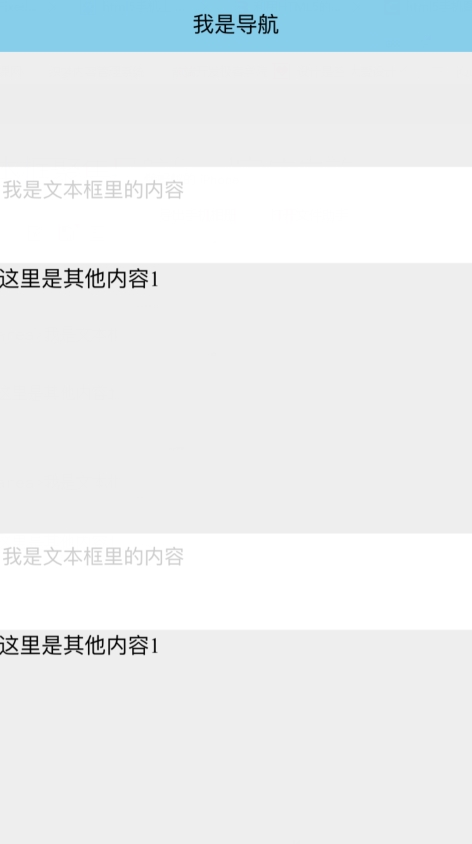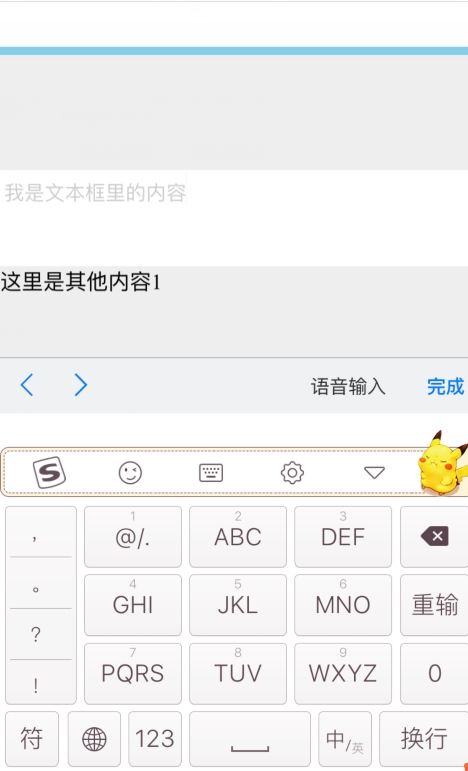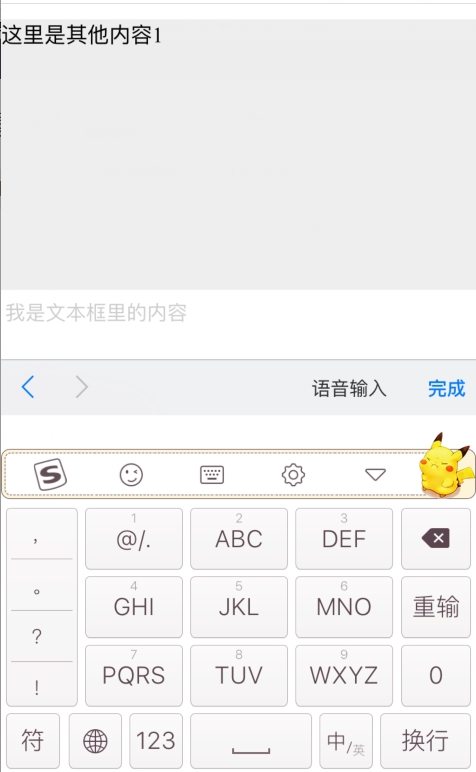通常情况下,我们都会使用css中的position:fixed 来固定导航。这无疑是一种比较方便的好方法,但是当它在移动端,文本框获得焦点的时候,就会几乎失效。
解决方案
<!DOCTYPE html>
<html lang="en">
<head>
<meta charset="utf-8">
<meta content="width=device-width,user-scalabe=no,initial-scale=1" name="viewport">
<style>
html,body {
margin:0;
padding: 0;
width: 100%;
height: 100%;
}
header {
height: 40px;
background: skyblue;
position: fixed;
left: 0;
right: 0;
top: 0;
text-align: center;
line-height: 40px;
}
textarea {
width: 100%;
height: auto;
text-align: left;
line-height: 2.2em;
color: #ccc;
font-size: 15px;
outline-style: none;
/*禁止手动拖拽*/
resize: none;
overflow: auto;
padding: 0;
margin: 0;
border: none;
}
main, section, header, footer {
display: block;
width: 100%;
}
main div {
height: 200px;
background: #eee;
}
/*可以把中间的主体区域手动设置成一个独立的滚动区域*/
main {
width: 100%;
position: absolute;
right: 0;
left: 0;
top: 40px;
bottom: 0;
overflow-y: scroll;
/* 该属性可以使移动端滑动更加自然 */
-webkit-overflow-scrolling: touch;
}
</style>
</head>
<body>
<header>我是导航</header>
<main>
<section>
<textarea>我是文本框里的内容</textarea>
<div>这里是其他内容1</div>
</section>
<section>
<textarea>我是文本框里的内容</textarea>
<div>这里是其他内容1</div>
</section>
<section>
<textarea>我是文本框里的内容</textarea>
<div>这里是其他内容1</div>
</section>
</main>
</body>
</html>但是这种方法虽然可以让导航固定,不会掉下来,但是也会造成导航有时候会不固定在顶部,如图所示:
这是正常时的显示效果
这是触及上面文本框时的显示效果
这是触及下面文本框时的显示效果
以上是参考网上的方案,大神们如果有更好的解决方案,欢迎给我留言,感激不尽!

























 2103
2103

 被折叠的 条评论
为什么被折叠?
被折叠的 条评论
为什么被折叠?








